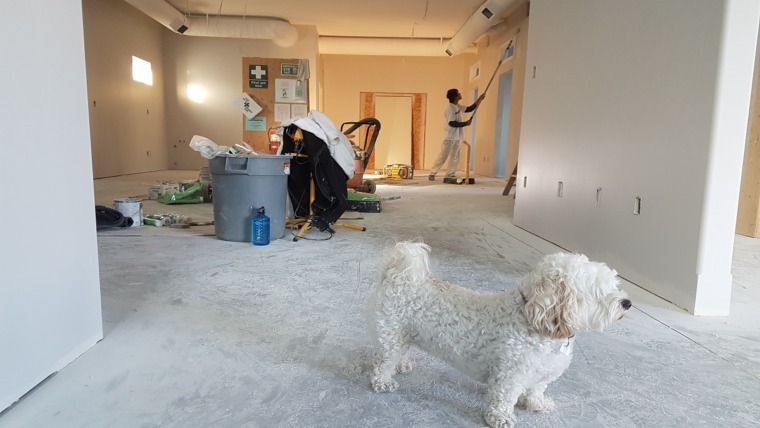
While Stuck At Home
Written by Anna Moltchanski, Australian Energy Foundation
As we deal with the impacts of COVID-19, we’re spending a lot more time at home.
Gadgets and gizmos are buzzing to keep us entertained, the home office is working overtime and our heaters are on in full force to keep us toasty as the temperature begins to drop.
So how do we keep energy costs conservative during this unprecedented time at home? Here are seven easy ways to save energy while keeping you and your family connected, comfortable, and entertained.
1. Heating
Many households find that heating is their biggest energy expense — even more so when everyone’s staying home during a chilly winter’s day.
Cut Those Costs While Keeping Warm With These 4 Energy-Saving Tips:
- Heat with Your Home Air Conditioner
Most modern air conditioners have a reverse cycle, which is the least expensive way to heat your home.
- Set Your Heater To 18-20℃
You’ll hardly notice a couple of degrees warmer or cooler than this, but your heater will; every degree higher can add 10% to its winter running costs.
- Use Personal Heating Products
If you’re working or studying at a desk, or just relaxing on the couch or bed and don’t need to heat an entire room, you may want to consider personal heating products. Products such as heated throws rugs, heated seat pads, and even heated clothing are affordable, deliciously snuggly and only cost around three cents an hour to run.
- Weather Proof Your Home
Gaps and cracks in your house, such as those around doors, windows, floorboards, chimneys and vents, can have a significant impact on the temperature of your home. These videos provide some simple, affordable DIY tips for weatherproofing, including sealing doors, vents, and fans. Note that if you have an unflued gas heater special care needs to be taken as they require a supply of fresh air to operate safely.
2. Hot Water
Here are the three easiest tips for cutting your hot water costs:
- Take Showers Instead of Baths
Even a relatively long 8-10 minute shower uses 75-150 litres less water than the average bath.
- Take 4-6 Minute Showers
You can halve your shower costs by halving your shower time. Set a timer for 4-6 minutes, and use some of these fun ideas to get your family on board with shorter showers.
- Wash Laundry in Cold Water
Many delicate fabrics need cold washes anyway. Do the rest of your laundry with them — you’ll save 80% of the energy needed for a typical warm water load.
3. Energy Bill Comparison
- Review your Retailer and Plan
While you’re at home on your computer, it’s the perfect time to see if a different energy plan can save you more. Compare your energy bills quickly and easily at the Federal Government website Energy Made Easy. If you haven’t switched your plan for a while, you could end up saving quite a bit.
Victoria Residents: use Victorian Energy Compare by 30 June 2020 and get $50 just for comparing.
New South Wales Residents: Use Energy Switch
4. Window Curtains
Keep heat from escaping through your windows with some heavy curtains — or, in a pinch, bubble wrap.
5. Electronics
Our computers, TVs, game consoles, and sound systems are going to see heavy use as we enjoy well-deserved home entertainment. Here are ways to make sure they don’t make you pay for the electricity you don’t use:
- Use A Laptop Instead of A Desktop Computer
Most of us have laptops anyway, and they use up to 80% less energy than desktop computers.
- Turn Off “Energy Vampires”
Some electronics, called “energy vampires”, keep charging even in standby mode, pushing your electricity bill higher for the energy you don’t even use. To avoid standby power use, turn off these appliances at the powerpoint after use:
- Computers and computer equipment
- TVs
- Surround sound systems
- Cable and satellite TV boxes
- Household items with a clock (i.e. microwaves, DVD players)
You may like to get your whole household on board for cutting energy use and disabling “energy vampires”.
6. Cooking
Now is a great time to experiment with new recipes and serve up old favourites. As you’re creating delicious meals, save energy and:
Cool At The Right Temperature
Set your refrigerator to 3°- 4°, and your freezer to -15° to -18°. These temperatures will preserve your food safely without wasting unnecessary electricity.
Use Smaller Appliances
Baking up an apple crisp? You can do that — and much more — in a microwave instead of having to heat an entire oven. The smaller the kitchen appliance, the less energy it uses (and the less you have to pay in energy bills). Opt for toasters, sandwich presses and slow cookers over using the oven.
Optimise Your Oven Use
If you are using your oven, make full use of that big heated space by cooking multiple dishes at once. Ensure that the oven door is closed properly and that all seals are intact.
7. Solar Research
Now that you’re home during the day, it’s the perfect time to investigate your options for solar and battery storage. Going solar will lower your energy bills permanently and has a short payback period of 3-5 years, with multiple financing options. Start with this guide to choosing the best solar panels for your home.
Please note if you are experiencing financial difficulties in paying your bills, your retailer will have a hardship program that may give you access to payment extensions, tailored payment plans, and a pause on energy disconnections. You can also ask for a bill from your retailer at any time, and you may wish to do so to review potential spikes in your energy usage in recent weeks.



